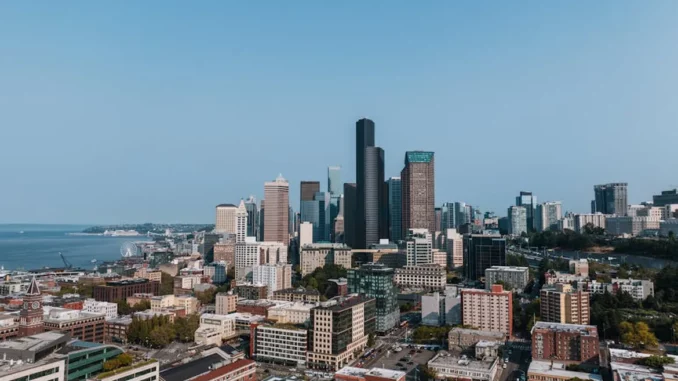
As urban centres across the United Kingdom and the European Union grapple with the intricacies of modern development, mixed-use projects present themselves as a promising remedy to the intertwined challenges of housing shortages and sustainability. These projects, which seamlessly blend residential, commercial, cultural, and green spaces into integrated environments, offer a multifaceted strategy for urban revitalisation. With urbanisation trends showing no signs of abating, mixed-use developments make a compelling case for nurturing inclusive, vibrant, and sustainable cities.
Focus360 Energy: property compliance services – pre-planning to post-construction. Learn more.
The world’s urban population is on a relentless upward trajectory, with projections suggesting that by 2050, 68% of the global populace will reside in urban areas. This demographic shift imposes immense pressure on cities to accommodate burgeoning populations while maintaining quality of life. In Europe, where 74% of the population is already concentrated in urban settings, the strain on housing and services is palpable. House prices within the EU have surged by an average of 48% from 2015 to 2023, outpacing inflation and exacerbating issues related to affordability. The rise in short-term rentals and investment-driven property purchases further inflates prices, disproportionately impacting low-income households and younger demographics.
Housing has emerged as a central issue within political discourse across the UK and Europe. The appointment of Dan Jørgensen as the EU’s inaugural Commissioner for Housing underscores the urgency of addressing this burgeoning crisis. While initiatives focusing on energy poverty and demographic shifts are crucial, a comprehensive approach is necessary to ensure equitable access to affordable, quality housing for all. In the UK, the Labour government’s ambitious plan to construct 1.5 million homes within five years highlights the pressing need for increased housing supply. However, achieving this target necessitates overcoming practical constraints such as infrastructure capacity and land availability, requiring concerted collaboration between national and local authorities.
Mixed-use developments offer a strategic response to these challenges by optimising land use and promoting sustainable urban growth. By integrating diverse functions within a single project, these developments diminish the need for travel, promote walkability, and enhance community cohesion. The adaptability of mixed-use spaces was particularly evident during the COVID-19 pandemic, as they deftly repurposed areas to meet shifting demands, ensuring continued viability. Moreover, these projects contribute to sustainability by minimising reliance on cars and encouraging public transport, cycling, and walking. This not only reduces carbon emissions but also bolsters local economies by encouraging spending within the community. The integration of green spaces and communal areas fosters physical activity and mental well-being, cultivating healthier communities. Furthermore, the high demand for mixed-use environments can drive rental premiums, benefiting property owners and supporting local businesses.
Nonetheless, mixed-use developments are not without their challenges. High development costs, complex regulatory landscapes, and the risk of gentrification are notable impediments. Securing adequate funding and navigating diverse regulations necessitate strategic management and cooperation among stakeholders. Balancing the diverse functions within a development is crucial to preventing conflicts and ensuring inclusivity. Additionally, addressing infrastructure capacity and land availability is essential for the success of mixed-use projects.
Successful mixed-use developments, such as London’s King’s Cross and Milan’s MIND, exemplify the potential of these projects to transform neglected areas into thriving communities. By aligning housing objectives with local capabilities and dismantling bureaucratic barriers, national and local authorities can fully harness the benefits of mixed-use developments. Embracing this approach will be vital in shaping cities that are liveable, sustainable, and inclusive, ensuring the creation of vibrant and resilient urban communities.
As urban areas continue to evolve, mixed-use developments represent a forward-thinking solution to the housing and sustainability challenges they face. By reimagining the design and utilisation of urban spaces, these projects can address pressing issues while simultaneously supporting economic and social growth. They hold the potential to foster sustainable, inclusive, and adaptable urban environments, pivotal to the future of city living.


Be the first to comment